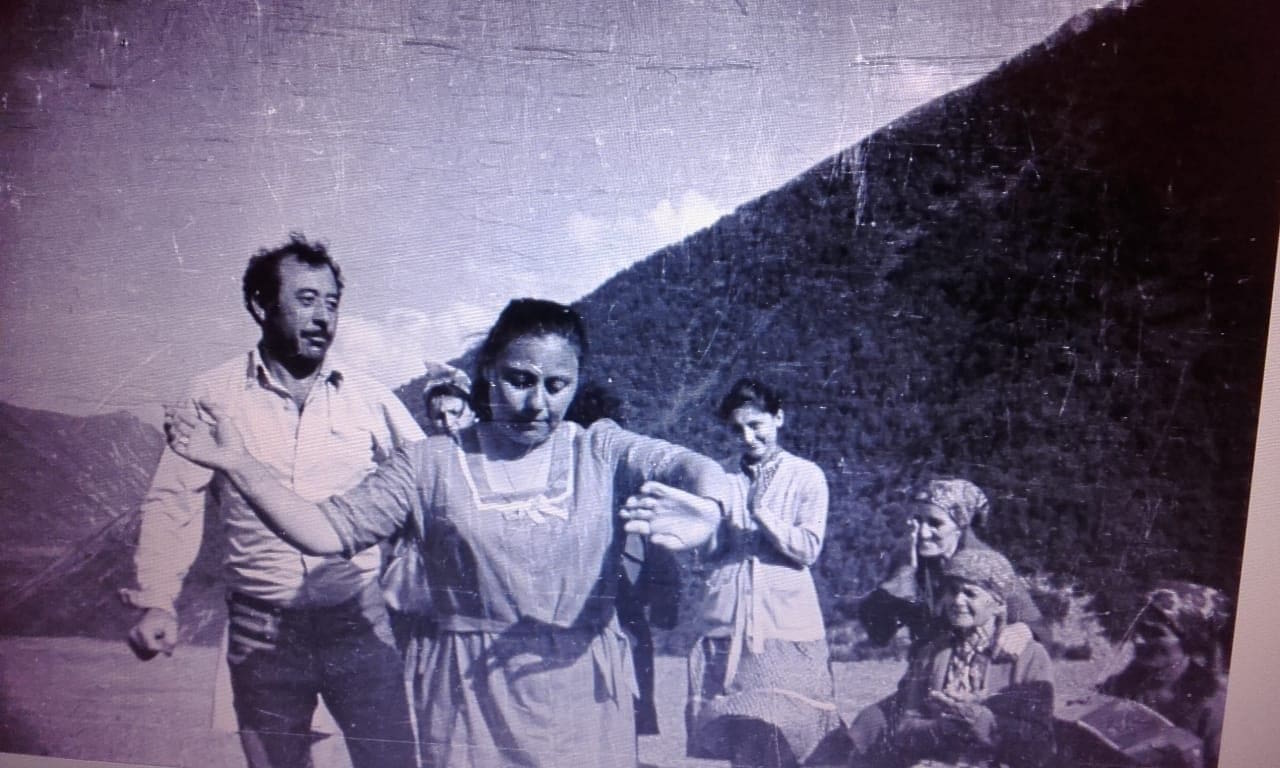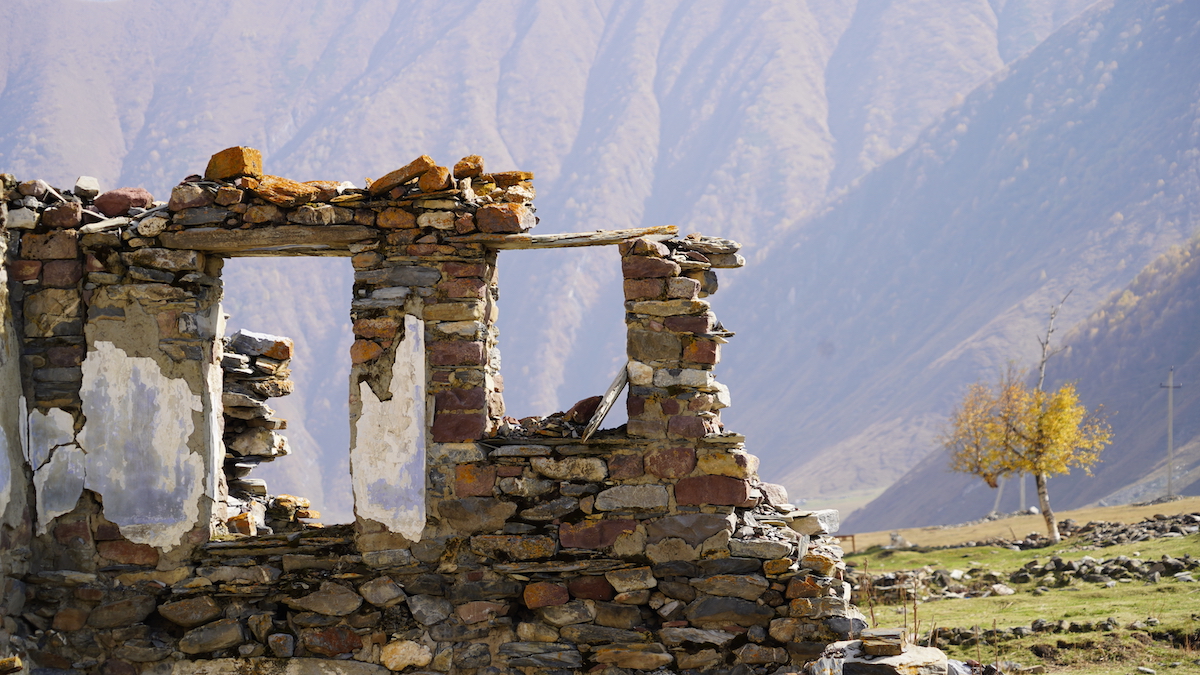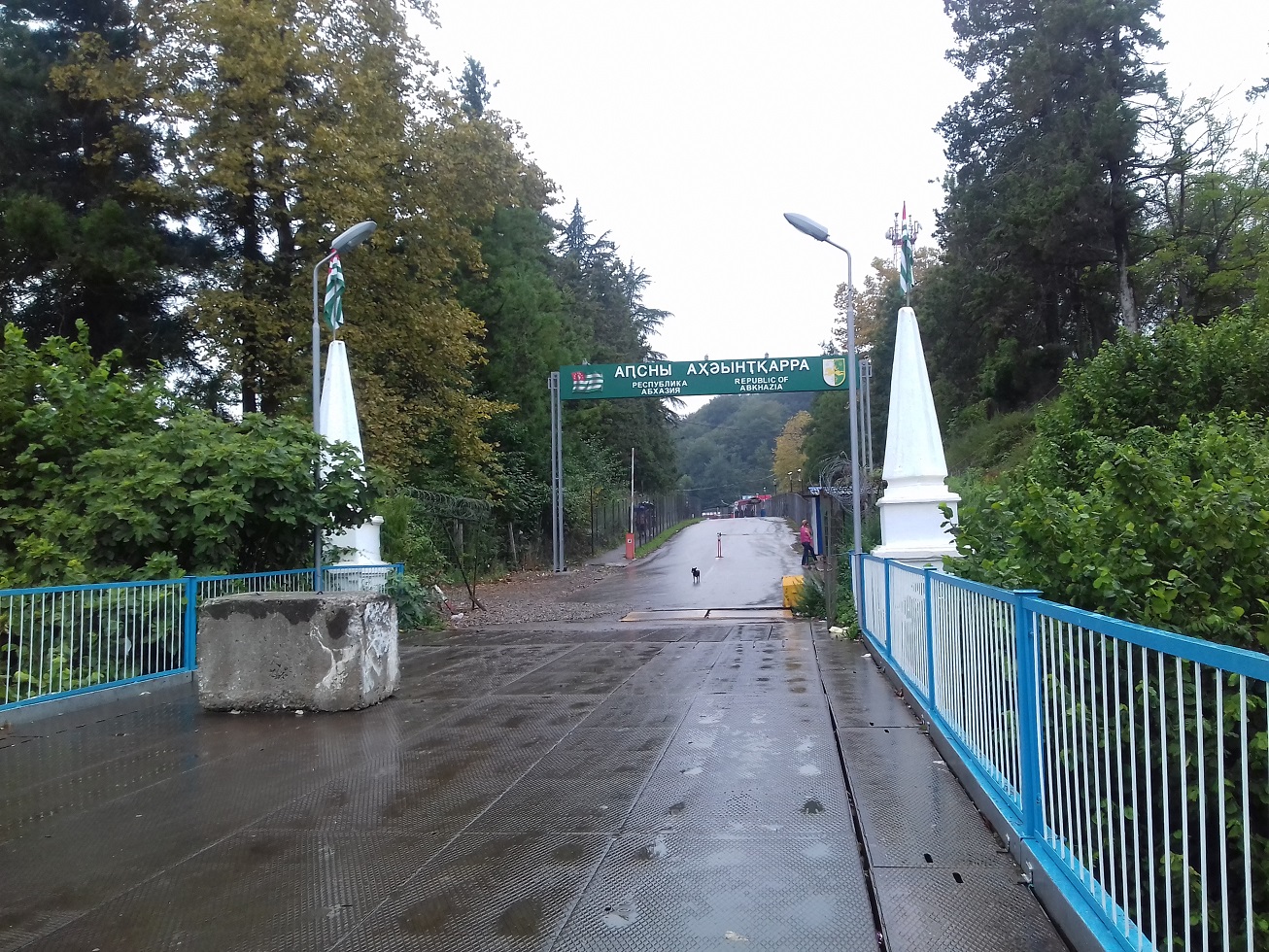"Without the Russians, we'd solve it ourselves." Report from Georgian-Ossetian conflict zone villages
Reconciliation of Georgians and Ossetians
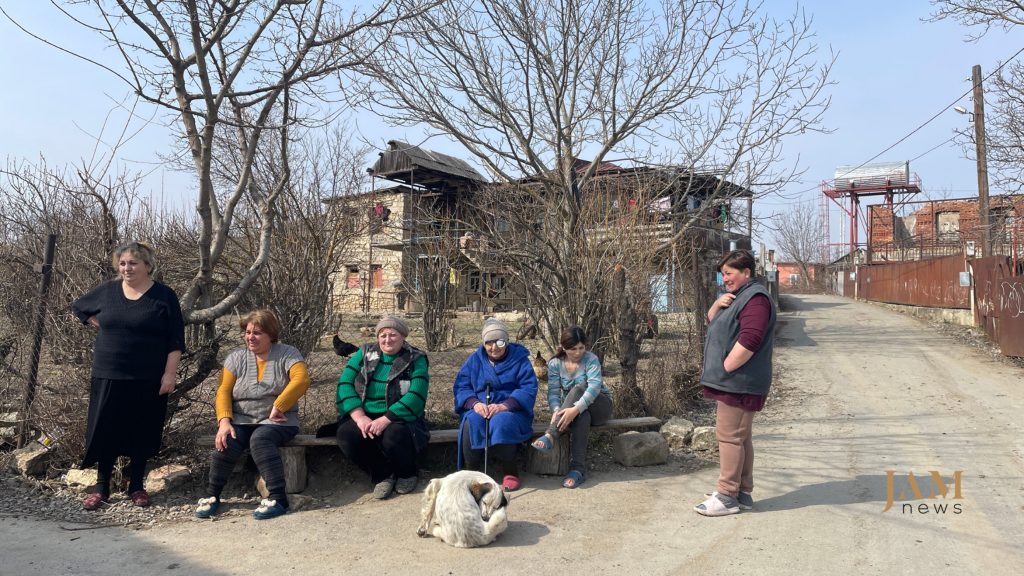
As a result of the armed conflict and interethnic tensions in Georgia from 1989 to 1992, up to 70,000 ethnic Ossetians living in Georgia were forced to relocate, leaving all their possessions behind.
In turn, 12,000 ethnic Georgians also left their homes in the conflict zone.
Some of the homes abandoned by Ossetians no longer exist, some are still standing but abandoned, and some have new owners. Some were bought legitimately, while others were taken over without permission.
- Prayer in an abandoned village. For the first time in 16 years Ossetian pilgrims visit sanctuaries in Georgia’s border zone
- 700-year-old Ossetian alpine village and its residents. Photo story
- Life in a secluded Georgian-Ossetian village of Velebi
Since 2006, Georgia has had a law intended to return property to those affected by the conflict, but due to a variety of reasons, it doesn’t work.
The Human Rights Center is researching how Georgians and Ossetians coexisted, and what Georgians living in conflict zone villages think about returning property to Ossetians or the possibility of living together again.
JAMnews and representatives of the organization visited villages in the Shida Kartli region, adjacent to the conflict zone.
Ossetians were one of the largest ethnic minorities in Georgia. According to the 1989 census, more than 164,000 Ossetians lived in Georgia, with 65,000 in the South Ossetian Autonomous Region and 99,000 in other parts of Georgia.
According to the latest 2014 census, 14,385 ethnic Ossetians live in Georgia. However, residents of the unrecognized Republic of South Ossetia, which the Georgian side calls the Tskhinvali region, did not participate in the census, as Georgia’s jurisdiction does not extend there.
Some Ossetians who emigrated want to return to Georgia and reclaim their left-behind property, but it’s not simple.
What determines the attitude of the Georgian community towards the Ossetian one?
In those villages of the Shida Kartli region where Ossetians and Georgians once lived together, there are many stories illustrating their coexistence. People in these villages have different attitudes.
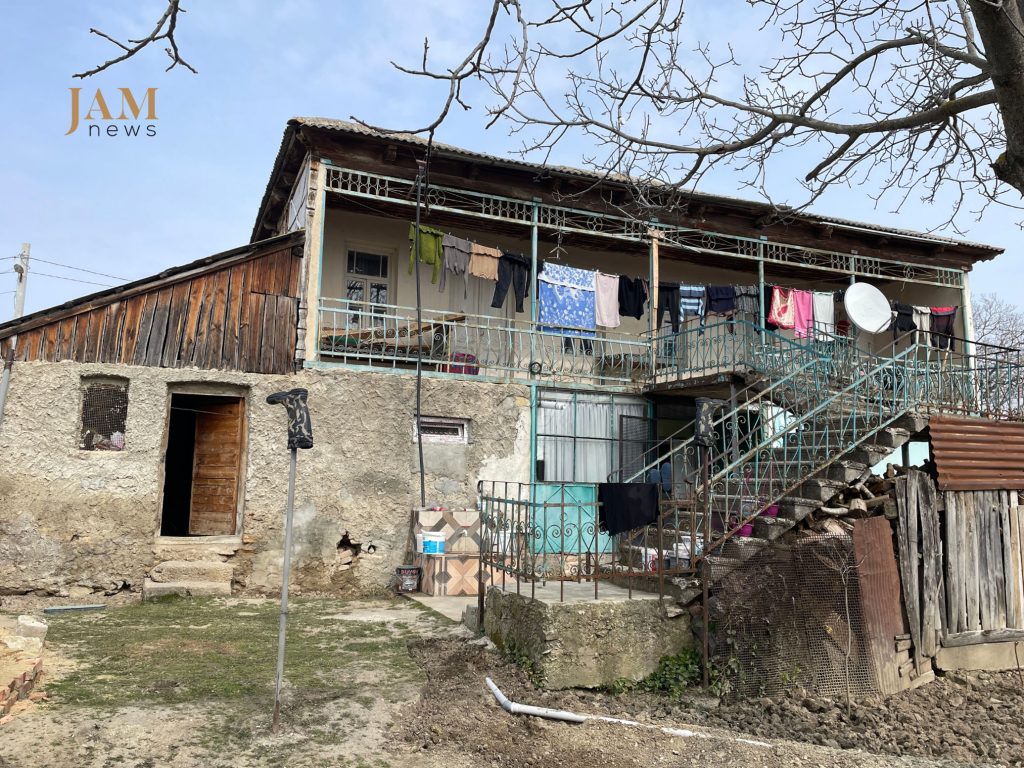
Some barely remember living together with Ossetians and don’t want them to return. They find it hard to imagine reconciliation and being neighbors again; it scares them. Among these people, myths and deeply ingrained stereotypes about Ossetians being unreliable are common.
However, the majority of these village residents only remember friendly relations with the Ossetians. Some still maintain connections with relatives or former neighbors who stayed on the other side of the conflict line.
For this group, Russia is seen as the main problem. They say that “if it weren’t for the Russian occupation army and the so-called borders it has established, people would easily resolve everything on their own.”
Residents of these villages agree that both sides will need to forgive because both Georgians and Ossetians have made mistakes.
Most do not expect Ossetians to return in the near future. They say it will be difficult, especially since the reconciliation process has been stalled since the August War of 2008.
“We were neighbors, we were friends”

Nodar Mosiashvili works as a school janitor in Satsikhuri, a Georgian village with a population of just 300 people. Ossetians never lived in Satsikhuri, but they did in the neighboring village of Tsnelis, and the residents of the two villages had friendly and familial relations. After the August War in 2008, Tsnelis came under the control of the Russian military.
In Satsikhuri, there are those who fondly remember Ossetians and wish for their return, and those with bitter memories who fear it.
Nodar had many Ossetian friends in Tsnelis. He recalls that villagers would get their winter firewood from Tsnelis.
During the 1990s, amidst the conflict, chaos reigned. Both among Georgians and Ossetians, informal groups emerged that engaged in looting and harassment:
“Many took advantage of the situation, breaking into homes to rob them. Yet, they didn’t prevent us from getting firewood. They had lists and knew who were looters and who weren’t. They didn’t cause trouble for those they trusted.”
Nodar notes that in the 1990s, as Ossetians fled Tsnelis, many left their property under the care of Georgians. “I had a friend, the school director in Tsnelis. When Georgians entered the village, he was scared and left his car with me. He later returned to pick it up,” he says.
Despite the good memories, Nodar can’t envision the return of Ossetian property:
“There would be many obstacles. People don’t know how they would face each other again. If someone comes to you after 30 years saying, ‘Give me back my house,’ who would return it?”
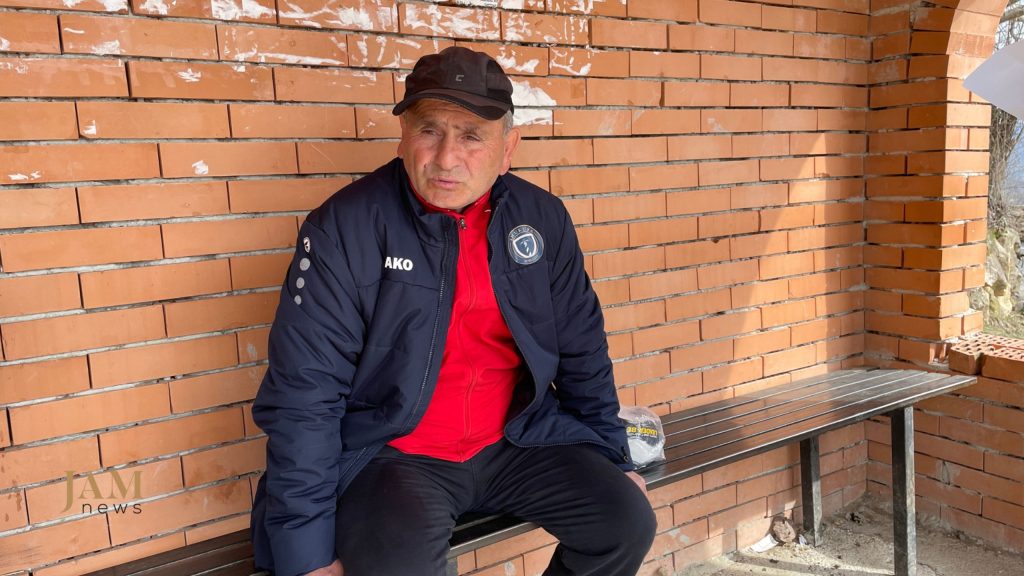
Gela Mchedlidze, living in Koda village, also has fond memories of Ossetians. Koda stands as Georgia’s last outpost in Shida Kartli, with barbed wire and warning banners marking the boundary just beyond its fields.
There is still one Ossetian family living in Koda. They never left the village.
Koda is a small village that didn’t have a school, so Gela went to school in Tsnelis. Among his classmates were both Ossetians and Georgians:
“We were like brothers and sisters. Whether it was a holiday or a wedding, the whole village of Tsnelis or Koda was invited. We got along well with each other.”
He still maintains relationships with some Ossetians, including those within his extended family. However, Gela no longer communicates with his former Ossetian classmates and has no contacts with those Ossetian villages now outside Georgian jurisdiction.
Gela Mchedlidze once even found himself in Ossetian captivity. This happened in 2006 when he wandered into the forest and accidentally crossed into territory not controlled by Georgia.
“They treated me well, didn’t harm me. I was released after two days,” he recalls.
He believes that if any Ossetians still have homes here, they have every right to return. “I would invite them, set the table for them. The main thing is that the Russians don’t interfere,” says Gela Mchedlidze.
“We are more forgiving, but Ossetians in their hearts don’t forgive us”
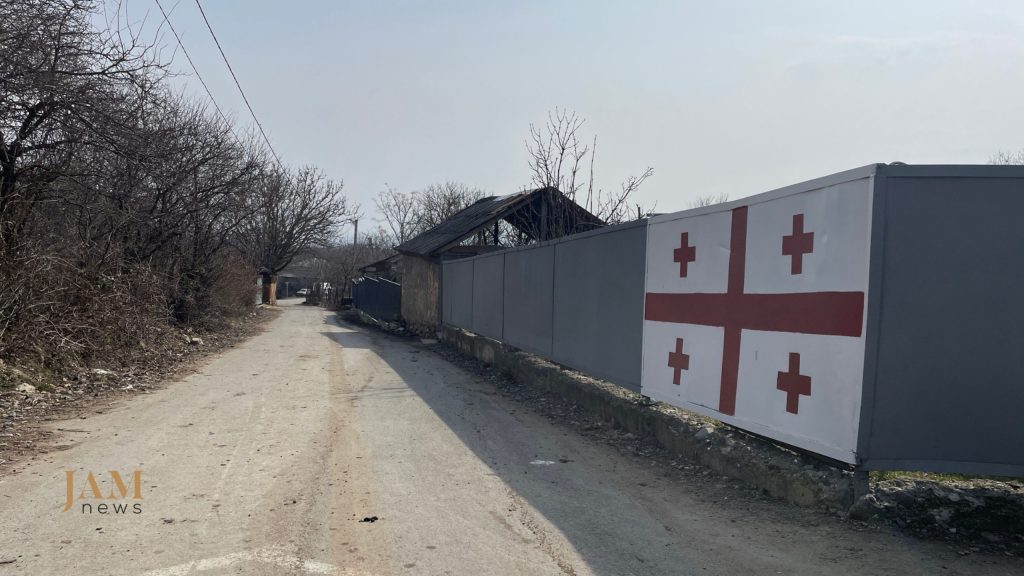
However, in the villages of Shida Kartli, there are also many unpleasant stories remembered.
Nana (name changed) recalls how in the late 1990s, Ossetian soldiers wounded her brother:
“Two soldiers came to buy sheep from us. One was from Tsnelis, the other from Gujarat. My father welcomed them, invited them inside, served them food, and when they were leaving, gave them wine to take with them. They were very drunk as they left. Suddenly, they turned around, pointed a gun at my father, and ordered, ‘Get down on your knees!’ My brother didn’t understand Russian, didn’t grasp what they said, and just rushed to help our father. They shot, and a ricochet wounded him in the shoulder. Then, our people beat them up.”
Nana also remembers another incident that happened to her husband much later, in 2010:
“He’s a teacher, works at a school. He was walking home from school, with students following him. Ossetians caught him, tied him to a tree with a belt, and beat him. At that time, there was a Russian and Ossetian checkpoint in the village of Abano. After this incident, we set up our police checkpoint there, and nothing like that has happened since.”
Nana says she’s afraid to live alongside Ossetians: “We are more forgiving, but Ossetians in their hearts don’t forgive us. And we’re afraid, we can’t trust them. We can’t go in that direction; the Russian [military] immediately captures us. But Ossetians need to show goodwill, and when someone is captured, they should release them.”
In these villages, people say, “Ossetians feel safe and strong behind the Russians, and that’s why they behave this way.”
Pichhovani was a mixed village, inhabited by both Ossetians and Georgians. It ended up right on the dividing line in the conflict zone in the 1990s. The local Georgians left their homes and moved away. Now, this village is on territory controlled by Georgia, but entering it is very difficult; you need special permission from the National Security Service.
45-year-old Tina lived in Khashuri and moved to Koda when she got married. Tina grew up in a mixed Georgian-Ossetian family: her mother is Ossetian, from the village of Pichhovani in the Akhmeta district, and her father is Georgian.
So, Tina’s mother now lives in the village of Al, near Khashuri. Only Tina’s elderly mother can now visit Pichhovani, where Tina spent her entire childhood.
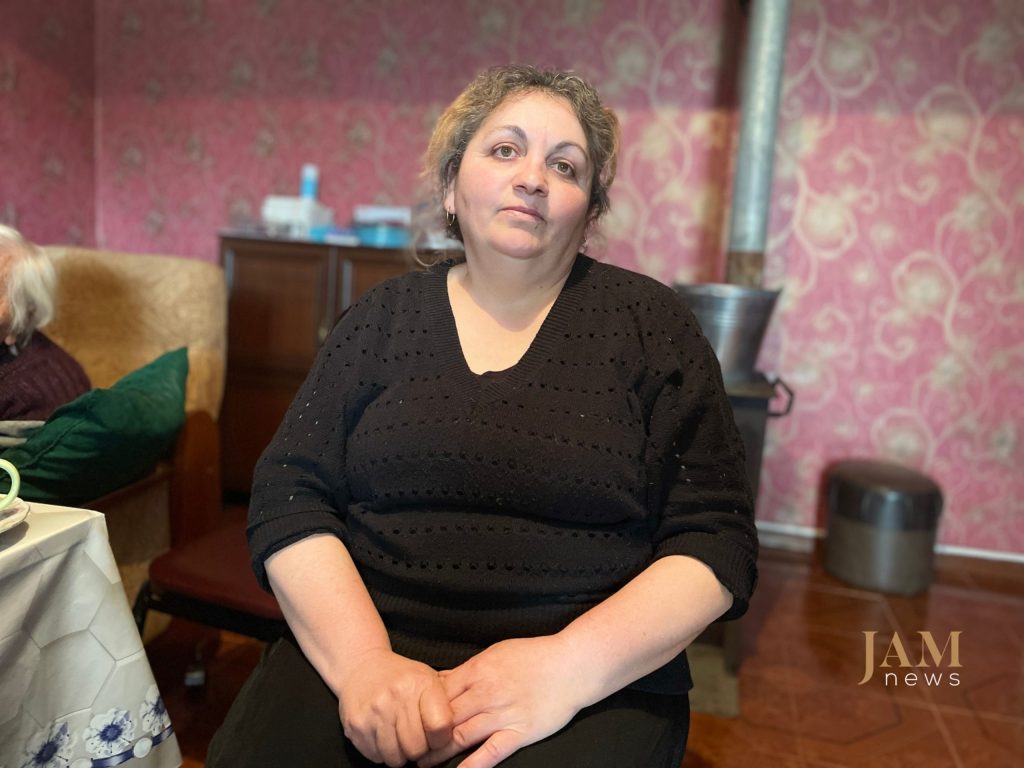
“Once, in 2008, my mom went there and took my son with her. But there was shooting at night, the child got scared, and they came back.“
The house in Pichhovani, owned by Tina’s mother and uncle, is now inhabited by relatives who remained there. However, there are few residents left. Most have moved to Vladikavkaz.
“My mom had elderly parents. When the borders closed and they couldn’t enter anymore, my uncles took them to Vladikavkaz. My mother’s mom passed away, and I’ve never visited her grave.”
Tina’s mother had nine brothers and sisters. Tina is not acquainted with their children and grandchildren.
“Once, they created a WhatsApp group. All of us were there, cousins, they were Ossetians, and I’m Georgian. So many years passed, and we know nothing about each other. That’s how we communicated online. One of my mom’s nephews lives in the Czech Republic, he promised my mom: ‘When I come, I’ll visit Pichhovani first, then come straight to you.'”
But despite all efforts, Tina hasn’t been able to connect with her cousins.
Imagining reconciliation
Local residents see Russia and the Russian army as the main barriers to reconciliation. They say the state must start this process, and it’s crucial that it’s peaceful. No one wants to live in fear and war.
“If there’s peace, coexistence becomes possible. We must forgive each other; both sides need to compromise,” says Tina.
“If it weren’t for the Russian army, people would reconcile. Why go to Geneva for talks? Russia is the main problem. If I have an Ossetian relative, doesn’t he consider me a relative, a close person? We can resolve everything ourselves if there’s no third force involved,” say the local residents gathered in the center of the village of Abisi.
There are those who believe that Ossetians too must want to reconcile with Georgians.
“If they don’t recognize us, how can we recognize them?” say local residents gathered near the school in Satsikhuri village.
“If they want to live in Georgia, they must follow the state’s laws. And it’s not like we’re wolves here,” says a local young woman, suggesting that Ossetians have nothing to fear.
“What can we do, our relations have taken a hit. But at some point, we’ll have to mend them, right?” adds her fellow villager.
“If the state makes a move, we’ll reconcile, we are law-abiding people,” joins in Nana.
Local residents also express deep concern for their youth. Both Georgians and Ossetians are raised with enmity, they say.
“It will be very hard for the young people if we don’t teach them, if we don’t speak well of each other to them, it will be very difficult,” says Gela Mchedlidze.
“My father would agree to the return of the Ossetians even today, but the youth have a negative attitude,” confirms another villager.
Still, everyone believes that this process must start at some point.
Article prepared with the informational support of Human Rights Center.
Reconciliation of Georgians and Ossetians











